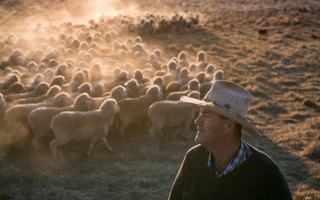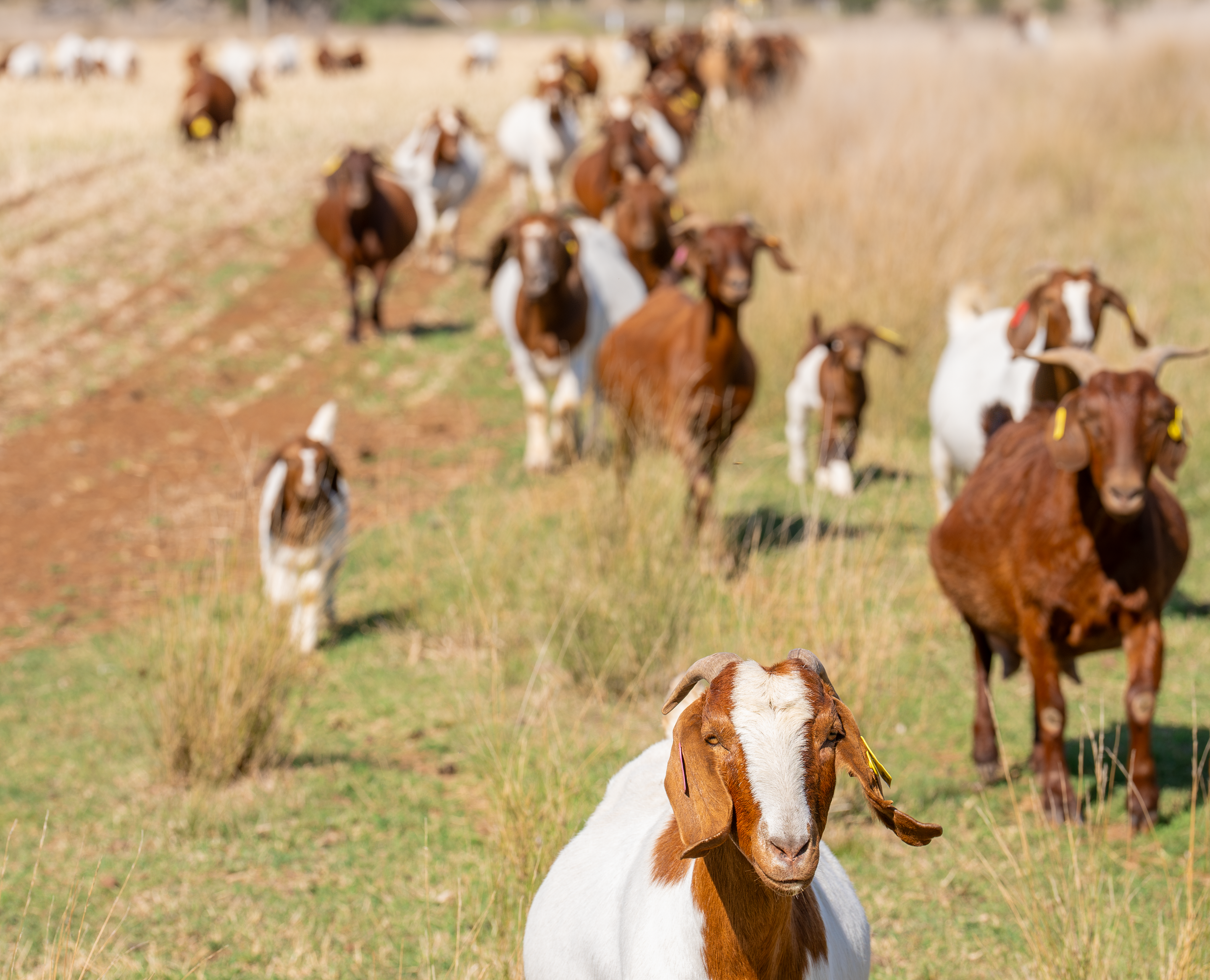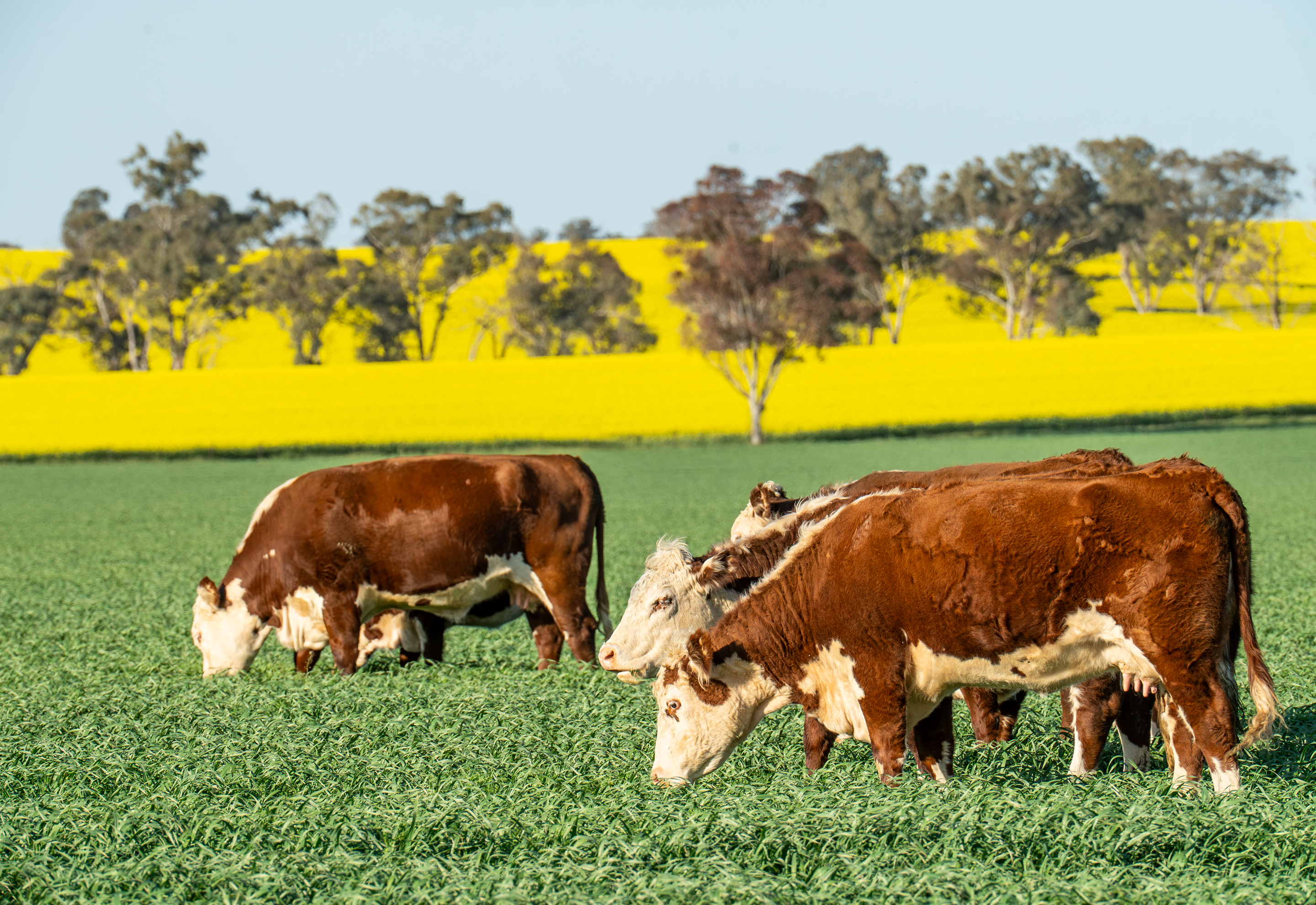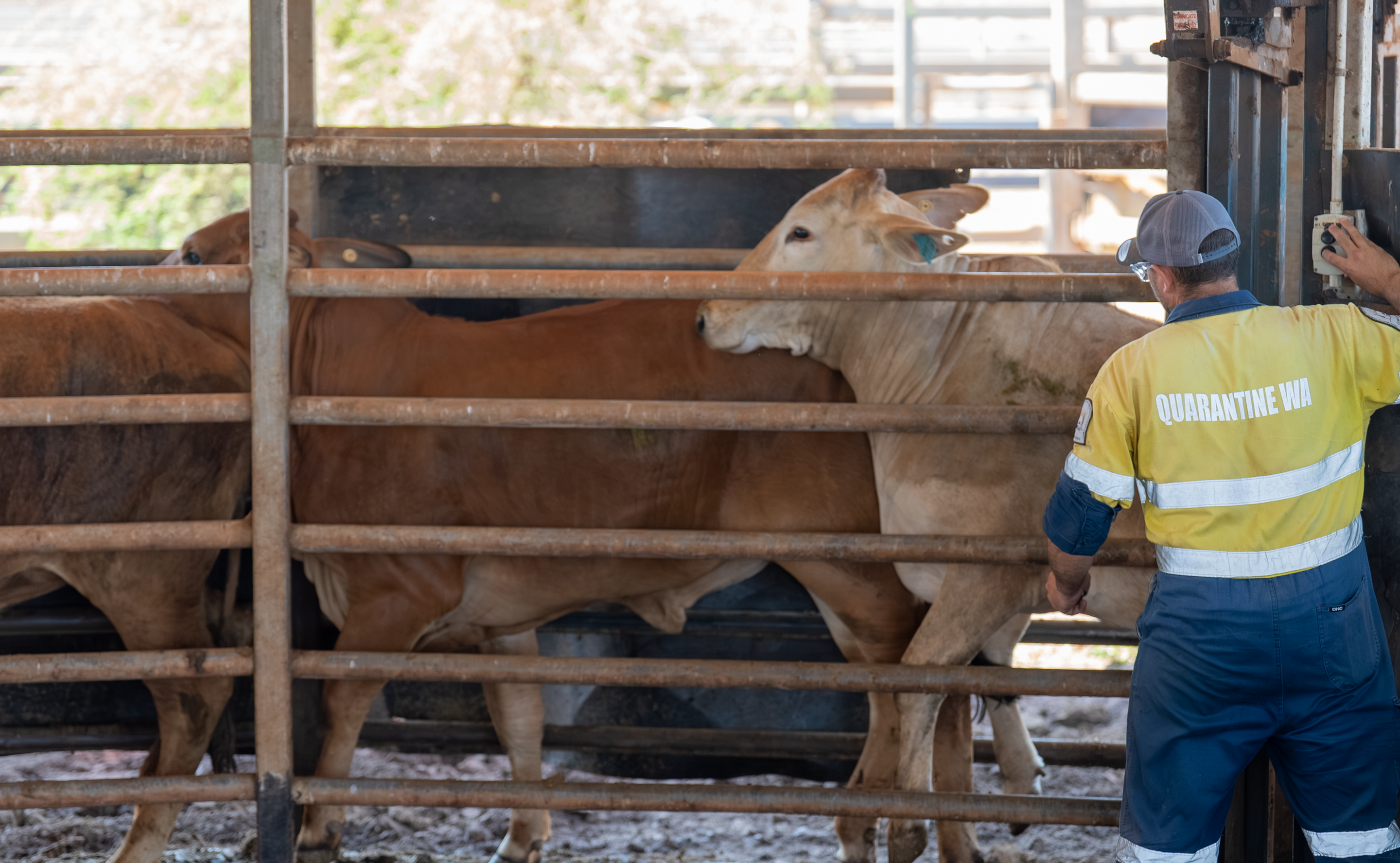A Step-by-Step Guide to Buying Studstock


Securing the exact genetics to advance your herd for generations to come is too important to leave to the fast-paced chance of the auction hammer. When you're ready to invest in stud stock that will shape your breeding programme's future, the private treaty market offers a strategic alternative that puts you firmly in control. Rather than competing in the heated atmosphere of public sales, buying studstock privately allows you to build relationships directly with breeders. You’ll be able to negotiate terms that suit your particular breeding objectives and thoroughly evaluate animals in their home environment.
This comprehensive guide walks you through each critical step of navigating private sales effectively. We will cover strategies from identifying reputable sellers to finalising the purchase and integrating new genetics into your existing herd. Whether you're seeking specific bloodlines for genetic improvement or looking to strengthen particular traits in your livestock, understanding the private sales process empowers farmers to make informed decisions that align precisely with their long-term breeding goals.
Why Look Beyond the Saleyards for Stud Stock
The advantages of acquiring quality breeding stock through private treaty extend far beyond simply avoiding auction day pressure. Direct negotiation with stud breeders opens doors to flexible arrangements around price, delivery timing, and payment terms that would be impossible in a public sale setting.
When you visit stud farms directly, you gain invaluable insight into how animals perform in their natural environment. You will be offered the chance to observe temperament under normal conditions rather than the artificial stress of sale preparation and transport. This on-farm assessment reveals crucial details about structural soundness, movement patterns, and social behaviour within the mob that catalogue photographs could never capture.
Building these direct relationships with established studs creates ongoing value for your breeding program, as many breeders become trusted advisors who understand your genetic goals and can alert you to future opportunities before they reach the public market. The confidential nature of private transactions also protects your strategic breeding decisions from competitors who might otherwise track your purchases through published sales results, allowing you to quietly secure the genetics that will drive your herd's profitability forward.


Step 1: Finding Reputable Stud Stock for Private Sale
Locating high-quality studstock available for private purchase requires a multi-pronged approach that combines traditional networking with modern digital resources.
Breed associations and societies remain the gold standard for identifying registered breeders with proven reputations. These organisations maintain comprehensive databases of members who meet strict breeding standards and can often provide direct introductions to studs specialising in your target traits.
Online marketplaces have revolutionised the search process, with platforms like Farmbuy featuring private sale listings alongside traditional auction catalogues. A large number of listings are now accompanied by integrated genetic data, including EBVs (Estimated Breeding Values) that allow you to filter animals based on specific performance criteria.
Industry networks built through field days, agricultural shows, and local farming groups provide invaluable word-of-mouth recommendations. Additionally, experienced stock agents and rural advisors can leverage their extensive contacts to identify opportunities that may never be publicly advertised.
Don't overlook the power of direct enquiries to stud farms known for excellence in particular bloodlines or traits. Many breeders maintain waiting lists for their best genetics and appreciate serious buyers who take the initiative to establish contact, particularly when looking for a specific stud for sale that matches breeding requirements.
Step 2: Key Steps for Evaluating Stud Animals On Farm
Evaluating potential studstock requires a systematic approach that balances visual assessment with data analysis to ensure you're investing in animals that will genuinely advance your breeding program.
During your on-farm visit, begin with a thorough conformation assessment, examining structural soundness from the ground up:
- Check the feet and pasterns for correct angles
- Evaluate leg set and joint flexibility
- Assess the strength and straightness of the topline
- Confirm adequate muscling for the breed while maintaining appropriate fat cover for the animal's age and production stage.
Temperament assessment proves equally critical, as you observe how animals respond to human presence, handle routine movements around yards, and interact with their mob mates. Aggressive or overly nervous animals can create handling difficulties and potentially pass these traits to their progeny.
Beyond the physical animal, diving deep into performance records and Estimated Breeding Values (EBVs) reveals the genetic potential that visual assessment alone cannot detect. These data will allow you to identify animals whose breeding values align with your selection objectives, whether that's improving calving ease, increasing growth rates, or enhancing carcass quality.


Signs of robust health should be evident throughout your inspection, from bright, clear eyes and a glossy coat to good body condition and alert behaviour. Furthermore, your discussions with the breeder about their herd health protocols, vaccination schedules, and any recent health challenges provide context for understanding the animal's overall vitality and likely adaptation to your property's conditions.
Step 3: Must Know Tips for Due Diligence and Background Checks
Thorough due diligence protects your investment and ensures the breeding animals you're considering will deliver the genetic advancement you're seeking.
Verifying lineage and pedigree through official breed society records using the animal's registration number confirms parentage claims and reveals the depth of performance data behind the bloodline. DNA parentage verification is becoming increasingly standard for high-value purchases to eliminate any doubt about genetic heritage.
Investigating the seller's reputation requires tactful enquiries within the industry. You may check their standing with relevant breed associations, review their historical sales results if available, and request references from other buyers who've purchased breeding stock from the same stud property.
Essential health records extend beyond basic vaccination history to include comprehensive testing for diseases relevant to your region and production system. Also take into account documentation of parasite control programmes, including drench resistance testing results, and fertility testing records for males or pregnancy scanning results for females.
Understanding the broader context of the property's management mirrors the process of evaluating a complete stud farm for sale. You need to assess the nutrition programme, stocking rates, and selection pressure that have shaped these animals, as genetics express differently under varying management systems. What performs exceptionally on one property may require adjustment to reach full potential on another.
Step 4: A Practical Guide to Negotiation and Pricing
Successful negotiation in private treaty sales begins with solid market research. To establish realistic price expectations, study current stud stock sales results from comparable auctions. Alongside this, also consider genetic merit as measured by EBVs or other performance indicators, as well as seasonal market conditions affecting overall demand.
When structuring your offer, present it professionally with clear reasoning that reflects your assessment of the animal's value to your breeding programme. Do acknowledge both the animal's strengths and any factors that might justify a price adjustment. They can be age, less fashionable bloodlines, or the purchase of multiple animals.
Beyond the headline price, skilled negotiators address these crucial terms:
- Delivery arrangements and who bears transport costs
- Payment schedules that might include deposits and staged payments
- Health or fertility guarantees with clear parameters and timeframes
- Inclusion or separate billing for registration transfer fees and health certificates
- Potential ongoing support from the seller regarding the animal's management
The importance of a comprehensive written sales agreement cannot be overstated, as this document protects both parties by clearly outlining all terms, conditions, and warranties. This document serves to specify what happens if issues arise post-sale, and provides legal recourse if either party fails to meet their obligations. Farmbuy's marketplace facilitates these formal agreements to ensure transparency and security throughout the transaction process.
Step 5: Important Logistics After You Buy Stud Stock


Successfully integrating newly purchased studstock into your operation requires careful planning that begins well before the animals arrive on your property.
Arranging safe transport involves selecting experienced livestock carriers who understand the exact requirements of valuable breeding stock. You will have peace of mind with the assurance that all necessary paperwork, including health certificates and movement permits, are completed correctly. Also covered will be the issues of delivery timing to minimise stress through extreme weather or manage when key personnel won't be available for receiving.
Preparing a dedicated quarantine facility separate from your main herd allows you to monitor new arrivals for any health issues that weren't apparent at purchase. You ought to implement your own health protocols, including drenching and vaccinations according to your veterinary programme, and gradually adjust animals to your property's feed and management system.
Best-practice biosecurity dictates a quarantine period of 21 to 30 days. During this period, you'll observe animals daily for signs of illness or stress, collect faecal samples for internal parasite testing, and potentially conduct additional disease screening based on your veterinarian's recommendations and your region's disease risks.
The gradual integration process respects the social dynamics of livestock, beginning with fence-line contact that allows visual and olfactory familiarisation. Progress by supervised mixing in neutral territory during calm periods like late afternoon, then carefully monitor for excessive aggression or bullying that might require temporary separation and a slower introduction timeline.
Finalising Your Stud Stock Purchase
The strategic acquisition of breeding stock through private treaty represents a powerful tool for farmers committed to deliberate genetic improvement within their herds.
Remember to follow this systematic approach:
- Research available genetics
- Thoroughly evaluate animals on-farm
- Conduct proper due diligence
- Negotiate fair terms
- Manage integration carefully
These steps will position your breeding programme for long-term success rather than leaving genetic progress to chance.
The relationships you build with reputable stud breeders through private transactions often become valuable partnerships that extend well beyond a single purchase. You can be provided with ongoing access to elite genetics and breeding advice tailored to your goals.
While the private treaty process requires more time and effort than simply raising your hand at an auction, the ability to secure exactly the right genetics for your breeding objectives, negotiate terms that suit your business, and thoroughly evaluate animals before purchase makes this strategic investment in your herd's future worthwhile.
Through platforms like Farmbuy that connect serious buyers with quality breeders while facilitating secure transactions, farmers can confidently navigate private sales to build herds that deliver consistent genetic gain and improved profitability across generations.
Frequently Asked Questions
What should be included in a private livestock sales contract?
A comprehensive private sales contract must specify the purchase price and payment terms, provide detailed identification of animals including registration numbers and any distinguishing marks, outline health warranties and fertility guarantees with specific timeframes and conditions, clarify delivery arrangements and risk transfer points, and include provisions for dispute resolution if issues arise post-sale.
What health records are essential when buying a breeding animal?
Essential health documentation includes complete vaccination history with dates and products used, results from disease testing relevant to your region such as Johne's disease or pestivirus, parasite control records including recent faecal egg counts and drench resistance testing, fertility testing results for males or pregnancy status for females, and any historical health issues or treatments that might affect future performance.
How long should I quarantine new livestock before introducing them to my herd?
The recommended quarantine period ranges from 21 to 30 days, allowing sufficient time to observe animals for signs of disease that may have been incubating at purchase. DUring this period, complete your own health testing and treatment protocols, and gradually transition animals to your property's feed and management system while monitoring their adaptation.
What are EBVs and why are they so important?
Estimated Breeding Values (EBVs) are scientific predictions of an animal's genetic merit for specific traits. This metric is calculated using performance data from the individual, its relatives, and progeny, then adjusted for environmental factors to provide objective selection tools that are far more accurate than visual assessment alone when identifying animals that will improve traits in your herd.
How do I verify the reputation of a stud breeder I haven't worked with before?
Contact the relevant breed society to confirm the breeder's membership status and any show or performance achievements, request references from recent purchasers and actually follow up with phone calls, search online platforms like Farmbuy for reviews or transaction history, and speak with local stock agents or veterinarians who may have experience with the operation.
Are prices negotiable in a private sale or are they typically firm?
Most private treaty prices are negotiable, with sellers often building some flexibility into their asking price. The degree of negotiation depends on factors like demand for the genetics, the number of interested buyers, seasonal conditions affecting cash flow, and whether you're purchasing multiple animals or establishing an ongoing relationship.
What's the difference between a stud animal and commercial livestock?
Stud animals are registered purebred stock with documented pedigrees, selected for superior genetics to improve specific traits in breeding programmes. Commercial livestock are typically crossbred or unregistered animals produced for meat, milk, or fibre production rather than breeding purposes, with stud stock commanding premium prices due to their genetic value.
What are the most important physical traits to look for in a breeding bull or ram?
Priority structural traits include sound feet and legs that will withstand years of breeding work, correct testicular development and scrotal shape for fertility, adequate muscling without excessive fat cover, a strong straight topline, good chest capacity, and appropriate breed character, with temperament being equally critical for safe handling and potential heritability.
What legal paperwork is required to transfer ownership?
Legal requirements include a signed sales agreement or receipt confirming the transaction, official breed society transfer forms to update registration ownership, health certificates or vendor declarations meeting your state's biosecurity requirements, and potentially a National Livestock Identification System (NLIS) transfer depending on your country's regulations.
Can I get a fertility guarantee when buying stud stock privately?
Many private sellers offer fertility guarantees. They typically cover a specific period, such as the first joining season. Accompanying terms could specify the testing required to prove infertility, whether a refund, replacement, or credit applies; and any conditions that might void the guarantee such as nutritional mismanagement or disease exposure on the buyer's property.







